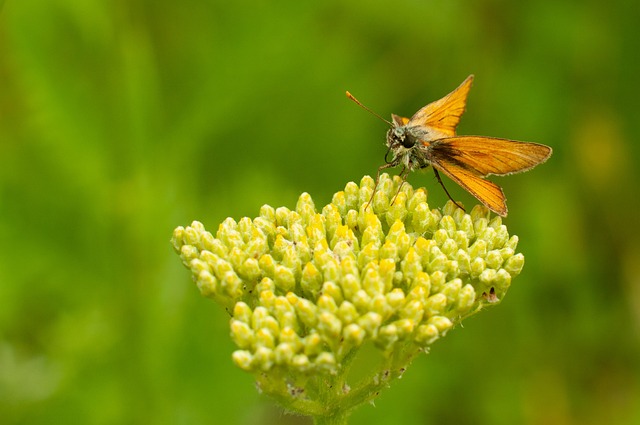Clothes moths infesting homes can be tackled with a combination of preventive measures and natural treatments. Regular vacuuming, inspecting for cocoons, and keeping fabrics clean, ventilated, and stored in natural containers are key to prevention. For gentle yet effective residential moth treatment, use natural repellents like lavender, cedarwood, or tea tree oil in laundry detergents or traps. Essential oil diffusers and pheromone traps are eco-friendly alternatives to harsh chemicals. Maintaining proper storage practices, keeping clothing clean, and ensuring good ventilation are crucial for successful long-term protection from clothes moths.
“Keep your home free from cloth moths with our guide to child- and pet-safe methods. Understanding these pests’ behavior and habitat is key to effective control. We explore non-toxic repellents, natural traps, and preventative measures tailored for safe use around kids and pets. From deterrents to storage tips, this comprehensive guide offers practical solutions for a residential moth treatment that prioritizes safety and peace of mind.”
Understanding Clothes Moths: Behavior and Habitat
Clothes moths are a common household pest, often found in areas where textiles and fabrics are stored. Understanding their behavior is crucial for effective residential moth treatment. These moths are attracted to natural fibers like wool, silk, and cotton, making them a particular nuisance in homes with carpets, furniture, and clothing made from these materials. They typically lay eggs in hidden locations, such as behind furniture or under rugs, where the larvae can feed undisturbed.
The moths prefer dark, quiet spaces and are most active at night. Their larvae spin cocoons to protect themselves during their transformation from caterpillar to moth. These cocoons can be found in crevices, under furniture, or within stored fabrics. Regular vacuuming and inspection are essential preventive measures, as they help remove eggs, larvae, and cocooned moths. Keeping textiles clean, well-ventilated, and away from areas where moths are likely to breed is also a child- and pet-safe method for controlling these pests in residential settings.
Child- and Pet-Safe Repellents and Detergents
When it comes to child- and pet-safe methods for clothes moth control, the first line of defence involves using repellents and detergents that are gentle yet effective. For a residential moth treatment, look for products specifically designed for sensitive environments. Natural repellents like lavender, cedarwood, and tea tree oil have been shown to deter moths without leaving harmful residues. These can be incorporated into laundry detergents or used as stand-alone treatments in affected areas.
In addition to repellents, using pet- and child-safe detergents during laundry cycles is crucial. Opt for gentle formulas free from harsh chemicals that could irritate skin or be ingested by pets. Hot water (above 50°C) is also an effective natural method to kill moths and their eggs, ensuring a thorough clean during washing. Always check product labels and follow safety guidelines to ensure a safe and effective residential moth treatment.
Natural and Non-Toxic Traps and Solutions
In the quest for effective yet safe methods of controlling clothes moths, especially in residential settings, natural and non-toxic traps and solutions stand out as ideal alternatives to harsh chemicals. These eco-friendly options not only minimize exposure risks for children and pets but also contribute to a healthier indoor environment. One such approach involves using essential oils, like lavender, tea tree, and cedarwood, known for their moth-repellent properties. Difusers or small sachets infused with these oils can be strategically placed in closets and drawers to deter moths naturally.
Another innovative method is the deployment of pheromone traps. These devices mimic the natural pheromones released by moths to attract and trap them without resorting to toxic chemicals. As a result, they are safe for use around children and pets while effectively monitoring and controlling moth populations in residential spaces, offering a superior alternative to conventional residential moth treatments.
Preventive Measures: Storage and Maintenance Tips for Clothing
To prevent clothes moths in your home, proper storage and maintenance are key components of a successful residential moth treatment strategy. Start by keeping clothing items clean and free from dirt or debris that might attract moths. Regularly wash and dry fabrics at high temperatures to kill any potential eggs or larvae.
When not in use, store clothing in airtight containers or bags made from natural materials like cotton or linen. Avoid using plastic containers as they can trap moisture and create an ideal environment for moth activity. Keep your home well-ventilated, especially in areas where fabric items are stored, to discourage moths from laying eggs. Regularly inspect and clean storage areas to remove any webbing or signs of infestation.
When it comes to tackling clothes moths in your home, a safe and eco-friendly approach is preferable, especially if you have children or pets. By combining natural traps, non-toxic deterrents, and proper storage practices, you can effectively manage these pests without exposing your loved ones or the environment to harmful chemicals. Remember, prevention is key, and with the right strategies, you can keep your wardrobe and textiles free from moths, ensuring a clean and safe living space for all.
